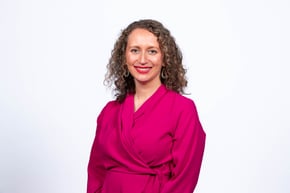The digital health industry is expected to grow to over $550B by 2027, [1] demonstrating significant support from the market. However, with more than a thousand digital health companies, progress is rapid, and outcomes are often difficult to prove. HIMSS defines 12 categories for Telehealth technologies:

- Triage Tools
- Scheduling & Virtual Visits
- Diagnostic Toolkits
- Digital Biomarkers
- Caregiver Tools
- Digital Pharmacies
- Care Companions
- Remote Monitoring Tools
- Digital Therapeutics
- Wellness Coaches
- Full-Service Solutions
- Data Management Platforms
The Shift to Digital
The surge in adoption of mobile and virtual technologies doesn’t mean that the shift to digital is just about the technology. It’s about the people and understanding the overall impact to people, systems, processes, and healthcare markets. At the end of the day, the shift to digital requires an entire cultural shift and new ways for clinicians and consumers to engage with one another, much like society’s shift to consuming other services. Take Blockbuster to Netflix for example. We went from going in person to the store and looking through shelves of videos to see what was available. This is not terribly unlike traditional in-person visits. It’s a single encounter that is somewhat transactional in nature. Then along comes Netflix putting the consumer in control with 24X7 access to content demonstrating a significant improvement in access, as well as a continuous connection allowing Netflix to learn our individual preferences. The promise of digital health is very similar. Moving from transactional encounters to a convenient and even continuous connection to clinicians improves timeliness of care. Additionally, the collection of data lays the foundation to better personalize care. And in both cases, the consumer is no longer tethered to physical location. However, as previously mentioned, digital health can do much more than allow remote patient care. It has the power to bring together the entire healthcare continuum, for example, providing connection between the ambulance and the hospital, pulling in specialists for immediate consults, and linking primary care doctors from rehab facilities to wellness checks in patients’ homes.[1] Fortune Business Insights: Telehealth Market, 2020-2027.
The Digital Front Door
Delivering this innovation in the wake of all the complexities of the US healthcare system, all while trying to optimize the patient experience, is challenging to say the least. The “Digital Front Door” serves as a single-entry point for patients to access personal medical records, benefits, content, and their care team. Ideally, it breaks down the barriers created by our disjointed system of care delivery organizations and associated medical records. The utopia would be a single point to access health-related data regardless of where the care was provided, or which payer covered the services. Having access to longitudinal data not only helps tailor care to the individual but also reduces the unnecessary waste and duplication of services performed. Given the inherent challenges with interoperability and general reluctance to share data, we are unfortunately years away from realizing the value of a comprehensive Digital Front Door which would include:- Access to a consolidated longitudinal health record stored across various systems of record including EMRs, Payer Systems, Pharmacy, etc.
- Intelligent engagement with care teams using smart forms, symptom checkers triage tools, personal preferences, etc. This helps connect patients to the right care at the right time.
- Ability to easily communicate with clinicians through secure messaging, video, and chat.
- Proactive participation in ongoing care capabilities such as RPM, patient education, and online forums.
- Access to available resources to assist with the social determinants of health.
- Collection of engagement data to improve overall automation and personalization using artificial intelligence and, ultimately, machine learning.


COMMENTS